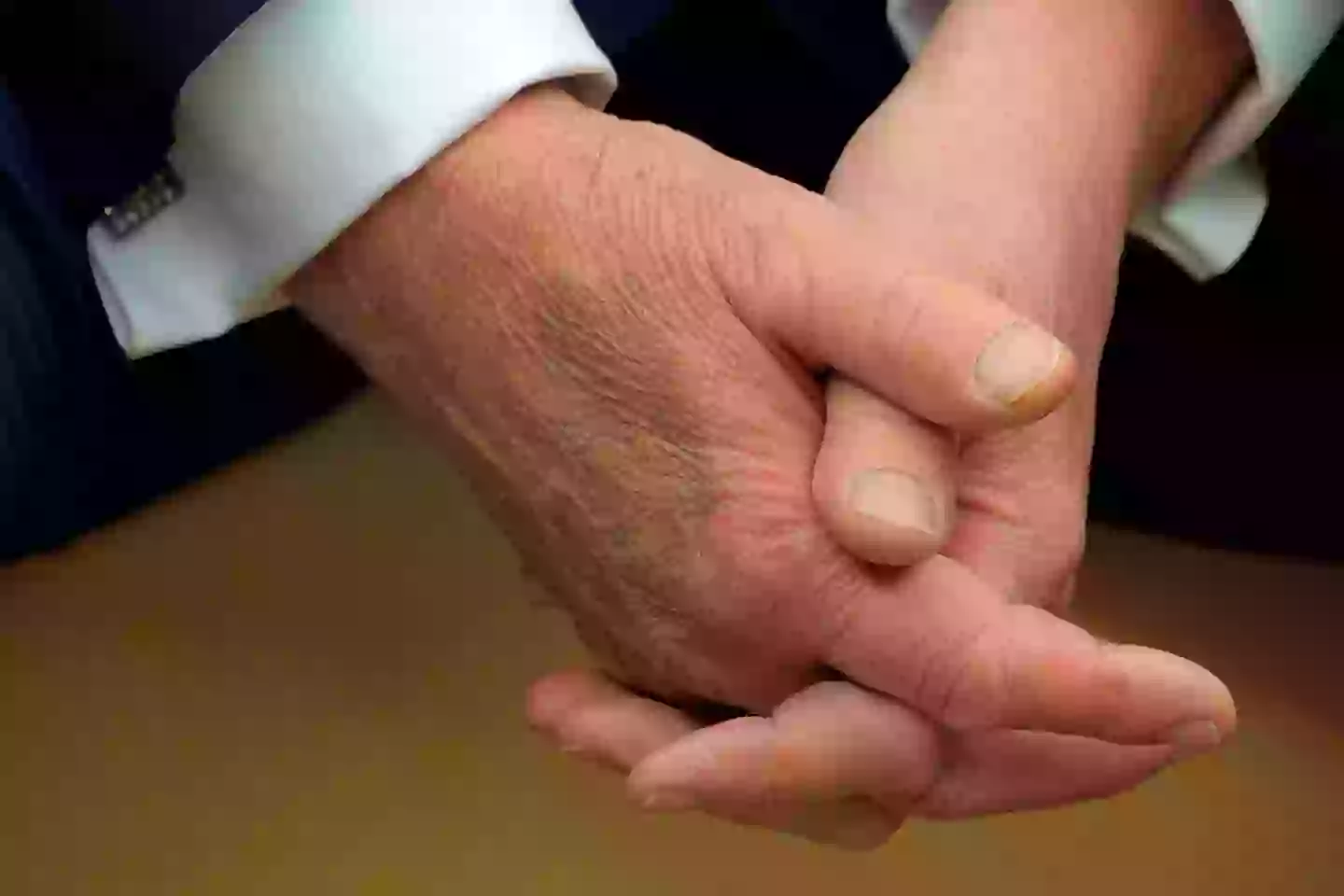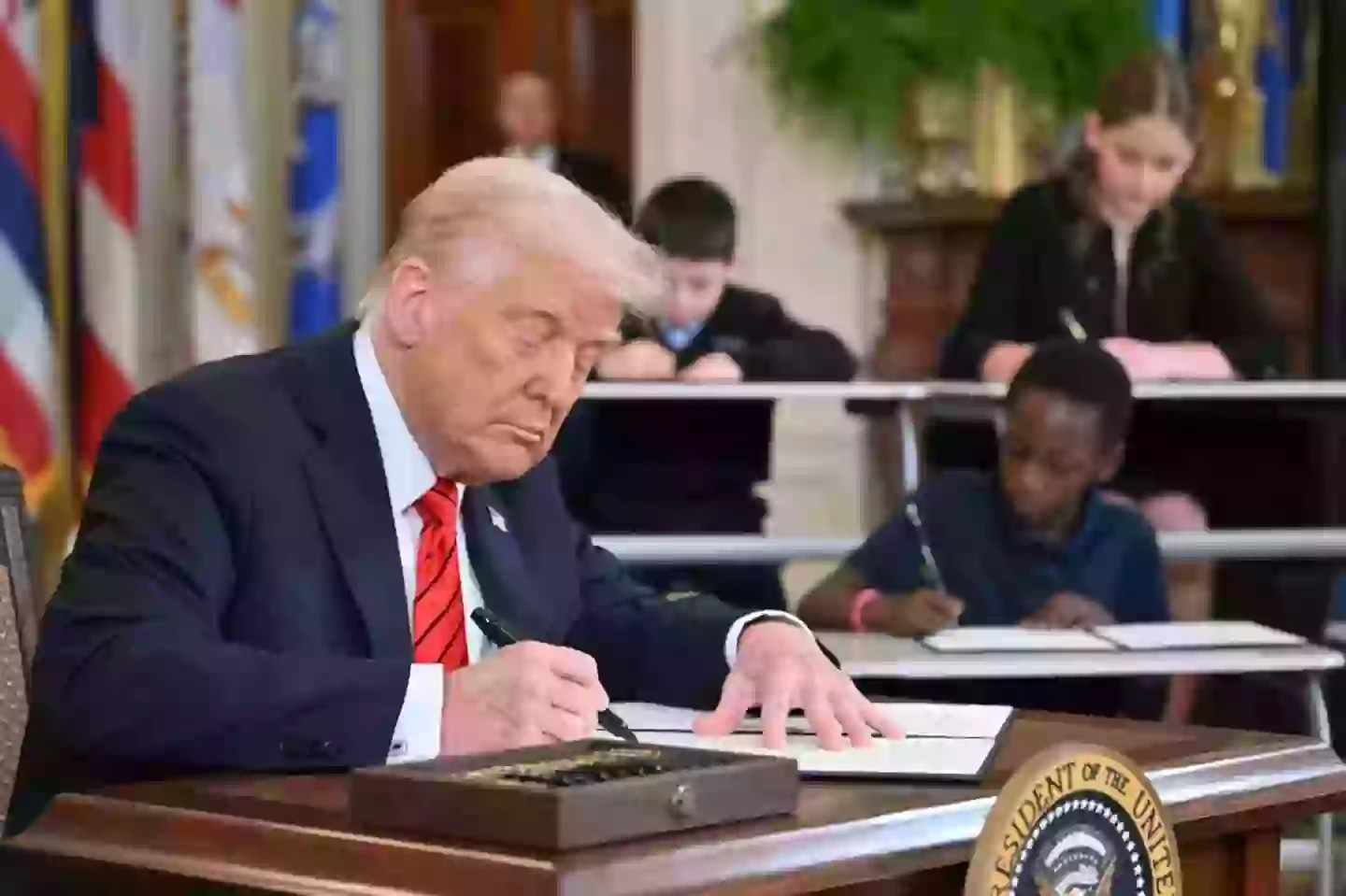President Donald Trump was recently seen with a noticeable mark on his hand while signing an executive order to dismantle the Department of Education.
This isn’t the first time this year that Trump’s hand marks have raised questions about his health. Observant viewers have previously noticed marks resembling bruises on his hand.
One such instance occurred during a meeting with French President Emmanuel Macron, coinciding with the third anniversary of Russia’s invasion of Ukraine.
Shortly after their press conference, photos circulated online showing a mark on Trump’s right hand, sparking conversation among viewers.
One social media user commented on X: “Scrolling Getty and couldn’t help but notice this photo of a huge bruise on Trump’s hand today.”
At that time, press secretary Karoline Leavitt commented: “President Trump is a man of the people and he meets more Americans and shakes their hands on a daily basis than any other president in history.”

Leavitt further explained: “President Trump has bruises on his hand because he’s constantly working and shaking hands all day every day.”
This week, Trump signed an order to eliminate the US Department of Education, criticizing it for inefficiency and liberal bias.
“Today, we take a very historic action that was 45 years in the making,” Trump declared at the signing ceremony. “My administration will take all lawful steps to shut down the Department; we’re going to shut it down, shut it down as quickly as possible. It’s not doing us any good.”
During this event, the cameras captured another mark on Trump’s hand, leading to renewed concern.

While some attribute the marks to Trump’s frequent handshaking, others speculate about medical reasons like an IV drip.
Dr. Anatalia Moore, a skin expert, suggests the marks could be age-related. She explained: “For many patients into their 70s, particularly if they are not what we call a ‘fit 70’; simply a knock on a door frame could also cause a significant bruise. Our limbs, hands included, are what tend to get knocked more easily as balance and coordination also deteriorate as we get older,” Dr. Moore told the Mirror.
“Initially a bruise will appear dark and purple red, the bigger the collection of blood under the skin the larger the bruise and the deeper its hue. The body then clears away the blood and repairs the damage and in doing so converts the red blood cells into easily transportable waste products; this is what contributes to the colour change in bruising.
“As the bruise heals we then see a green yellow colour appear. As we age, this healing process is slowed down, leading to bigger bruises happening that take longer to heal.”

